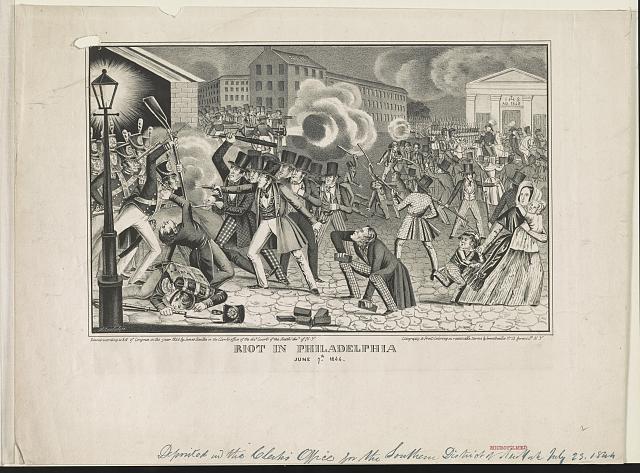To accompany our ongoing AHA Member Spotlight we have introduced an AHA Council Spotlight series featuring short interviews with our elected council officers. Like our membership, the AHA Council is composed of historians with wide-ranging specializations, interests, and stories. We hope this feature will let our membership get to know their elected officials in a different way.
Elaine Carey is chair and professor of history at St. John’s University in Queens, New York. She is currently vice president, Teaching Division and has been an AHA member since 1993.
Alma mater: I received a PhD in history from University of New Mexico (UNM).
 |
| AHA Councilor, Elaine Carey |
Fields of interest: Mexico, borderlands, crime, drugs, and gender
When did you first develop an interest in history?
As a military brat, I lived in Europe. My parents dragged me to churches, museums, galleries, and other cultural institutions and performances. Despite my adolescent objections due to my preference for shoe shopping, their efforts seemed to have paid off.
Have your interests changed since graduate school? If so, how?
I went to UNM with a topic in mind: the 1968 Mexican student movement. While there, I worked for the New Mexico Historical Review, which introduced me to academic publishing but also the concepts of local and near history. While at the NMHR, I learned paleography, toured archeological sites, created document guides, edited articles, lobbied the state legislature, coordinated conference displays and events, and worked with scholars as well as amateur historians. That experience introduced me to the history of the American West and the borderlands. Working on the history of transnational drug trafficking, my work at the NMHR has become more significant to my research and teaching.
What projects are you working on currently?
I am in the final stages of finishing a manuscript on women drug traffickers in the Americas from 1900 to 1980 in which I examine all levels of women in the drug industry, from mules to bosses of transnational organized crime syndicates.
As a new member of council, what are your goals for your term?
History is a widely admired field. I am constantly reminded of this during informal conversations on transatlantic flights. Yet, teaching history has always been a politicized act. With the changes in our profession and academia, teaching history has engendered criticism that has placed pressure on us to explain what we do and why it’s important. The AHA’s Tuning project has been an excellent platform to formulate these explanations with historians across the US.
More recently, reports have demonstrated the importance of history and humanities education. Yet, we still need allies in all areas of history education, and we must become allies to K–12 social science and history teachers because we are all historians. Public historians, historical practitioners, librarians, and archivists are all engaged in teaching, whether about a particular site or teaching the general public how to use a specific tool to research, for example, one’s genealogy. My work with archivists and librarians in New York improved my research methods but also my teaching. Working with teachers exposed me to some of the best pedagogical tools, assessment models, and new organizations and initiatives. These types of collaborations are important to sustain the discipline.
Is there an article, book, movie, blog, etc., that you would recommend to fellow AHA members?
I regularly read the AHA blog and website, and I avidly follow the NYPL librarians’ blogs. As a historian of drugs, I highly recommend Points: The Blog of the Alcohol and Drugs History Society. As a historian of Mexico and dope, I also consume narco-cultura, whether policy, crime, or historical studies, journalists on Twitter and blogs, telenovelas, B-Mexican flicks, music, or narco-literatura. Lately, I have been reading a wide array of border studies, and the works of my colleagues on the council.
What do you value most about the history profession?
Professions change, and ours has and will continue to change. Some of the recent changes are not easy to embrace, but the availability and access to information, ideas, and technologies are amazing for teaching, research, and communication.
Other than history, what are you passionate about?
My daily passions are dance, music, libraries, and wine, in no particular order. I usually pick up at least two dance classes a week. NYC has over 200 private libraries, many of which are in private clubs or organizations. Some people photograph food; I photograph private libraries when I get access.
Beyond dance and my library fetish, a couple of years ago I befriended a former opera singer turned wine connoisseur. He and his business partner, a rock vocalist, have a wine shop that is a clubhouse for wayward adults in eastern Queens. During a leave, I worked part-time selling and learning about wine while gossiping with the patrons. That work began my wine education, with a bit of music tossed in. My family and I attend at least one series at Lincoln Center and see other performances in and around the city. My partner is also a vocalist so even our son thinks guys are supposed to dig opera.
This post first appeared on AHA Today.
This work is licensed under a Creative Commons Attribution-NonCommercial-NoDerivatives 4.0 International License. Attribution must provide author name, article title, Perspectives on History, date of publication, and a link to this page. This license applies only to the article, not to text or images used here by permission.


